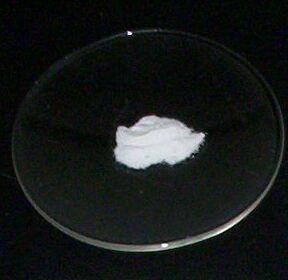|
Pseudartiocotylus
''Pseudartiocotylus'' is a genus of land planarians that currently contains a single species, ''Pseudartiocotylus ceylonicus'', found in Namunukula, Sri Lanka. Description The original description of ''Pseudartiocotylus'' states that the worm has a relatively short strap-like body and that there is a watch glass A watch glass is a circular concave piece of glass used in chemistry as a surface to evaporate a liquid, to hold solids while being weighed, for heating a small amount of substance and as a cover for a beaker. A larger watchglass may be referre ...-like sense organ between the eyes, as well as two ambulacral pits on the ventral side of the anterior end. This description, however, is too incomplete to correctly define the genus and further studies are needed. References {{Taxonbar, from=Q18582426 Geoplanidae Rhabditophora genera ... [...More Info...] [...Related Items...] OR: [Wikipedia] [Google] [Baidu] |
Genus
Genus ( plural genera ) is a taxonomic rank used in the biological classification of living and fossil organisms as well as viruses. In the hierarchy of biological classification, genus comes above species and below family. In binomial nomenclature, the genus name forms the first part of the binomial species name for each species within the genus. :E.g. '' Panthera leo'' (lion) and '' Panthera onca'' (jaguar) are two species within the genus ''Panthera''. ''Panthera'' is a genus within the family Felidae. The composition of a genus is determined by taxonomists. The standards for genus classification are not strictly codified, so different authorities often produce different classifications for genera. There are some general practices used, however, including the idea that a newly defined genus should fulfill these three criteria to be descriptively useful: # monophyly – all descendants of an ancestral taxon are grouped together (i.e. phylogenetic analysis should c ... [...More Info...] [...Related Items...] OR: [Wikipedia] [Google] [Baidu] |
Land Planarian
Geoplanidae is a family of flatworms known commonly as land planarians or land flatworms. These flatworms are mainly predators of other invertebrates, which they hunt, attack and capture using physical force and the adhesive and digestive properties of their mucus. They lack water-retaining mechanisms and are therefore very sensitive to humidity variations of their environment. Because of their strict ecological requirements, some species have been proposed as indicators of the conservation state of their habitats. They are generally animals with low vagility (dispersal ability) and with very specific habitat requirements, so they can be also used to accurately determine the distribution of biogeographic realms. Today the fauna of these animals is being studied to select conservation priorities in the Atlantic rainforest in Brazil. At the other extreme, one species in this family, ''Platydemus manokwari'' has become an invasive species in both disturbed and wild habitats in the ... [...More Info...] [...Related Items...] OR: [Wikipedia] [Google] [Baidu] |
Namunukula
Namunukula, literally "Nine Peaks" in Sinhala language, is the name of a mountain range in Sri Lanka's province of Uva UVA most often refers to: * Ultraviolet A, a type of ultraviolet radiation * University of Virginia, a public research university in Charlottesville, Virginia, United States Uva or UVA may also refer to: Places * Uva, Missouri, an unincorpora .... Its main peak is high. The nearby town is also sometimes called Namunukula Town. During the Ming treasure voyages of the 15th century, the Chinese fleet led by Admiral Zheng He made use of this geographical feature in their navigation to Sri Lanka, as the mountain is the first visible landmark of Sri Lanka after departing from Sumatra. See also * Badulla References {{UvaLK-geo-stub Mountain ranges of Sri Lanka Landforms of Badulla District Two-thousanders of Asia Populated places in Uva Province ... [...More Info...] [...Related Items...] OR: [Wikipedia] [Google] [Baidu] |
Watch Glass
A watch glass is a circular concave piece of glass used in chemistry as a surface to evaporate a liquid, to hold solids while being weighed, for heating a small amount of substance and as a cover for a beaker. A larger watchglass may be referred to as a clockglass. The latter use is generally applied to prevent dust or other particles entering the beaker; the watch glass does not completely seal the beaker, so gas exchanges still occur. When used as an evaporation surface, a watch glass allows closer observation of precipitates or crystallization, and can be placed on a surface of contrasting color to improve the visibility overall. Watch glasses are also sometimes used to cover a glass of whisky, to concentrate the aromas in the glass, and to prevent spills when the whisky is swirled. Watch glasses are named so because they are similar to the glass used for the front of old-fashioned pocket watches. In reference to this, large watch glasses are occasionally known as clock glasse ... [...More Info...] [...Related Items...] OR: [Wikipedia] [Google] [Baidu] |
Geoplanidae
Geoplanidae is a family of flatworms known commonly as land planarians or land flatworms. These flatworms are mainly predators of other invertebrates, which they hunt, attack and capture using physical force and the adhesive and digestive properties of their mucus. They lack water-retaining mechanisms and are therefore very sensitive to humidity variations of their environment. Because of their strict ecological requirements, some species have been proposed as indicators of the conservation state of their habitats. They are generally animals with low vagility (dispersal ability) and with very specific habitat requirements, so they can be also used to accurately determine the distribution of biogeographic realms. Today the fauna of these animals is being studied to select conservation priorities in the Atlantic rainforest in Brazil. At the other extreme, one species in this family, ''Platydemus manokwari'' has become an invasive species in both disturbed and wild habitats in the ... [...More Info...] [...Related Items...] OR: [Wikipedia] [Google] [Baidu] |


